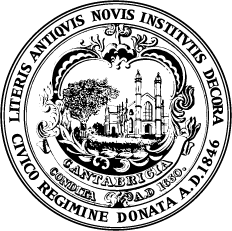Following a multi-year effort, the Cambridge Digital Architectural Survey Project (CDASH) is now making extensive paper records available to the public digitally!
The Cambridge Historical Commission Architectural Survey Collection contained10 file cabinets full of information on buildings, demolished or extant, in Cambridge. The collection includes systematic architectural survey records for each building in the city, clippings, photographs, maps, ephemera, and more. 40 file cabinet drawers are filled with folders, each named by street address or address range. Some folders contain additional information on their name-tab to designate a Named Place, such as Buildings, Streets and Squares, Canals, Bridges or other features. Folders also designate specific subjects, such as City Hall Paint and Mortar Studies.

The Cambridge Digital Architectural Survey Project (CDASH) allows the general public to browse through these fascinating files using a map-based catalog. Explore this resource at cdash.cambridgema.gov. At present, CDASH is best viewed on your laptop or desktop screen.
The Cambridge Digital Architectural Survey includes approximately:
- 1,800 folders
- 93,000 documents
- 131,000 pages featuring 15,000 distinct places
The collection is actively managed with several new entries each week.
The CDASH App & Geographically Linked Data
The user interface and the administrative back end for CDASH have been created with the popular open-source repository and discovery platform Omeka-S. Our customizations to Omeka-S showcase the versatility of geographic referencing as a means of linking data from diverse sources.
Geography was baked into the Architectural Survey’s physical filing and retrieval system as it was implemented in the 1960s and 70s. The order of the physical file system was preserved through the digitization and digestion process. Now on the web, CDASH explodes the linear order of street addresses to a fully geographic order that places the CHCs research in the context of antique maps and aerial photos as well as boundary and point data reflecting historic districts and sites shared by Cambridge GIS, Boston Public Library, and the Massachusetts Cultural Resources Information System (MACRIS). The CDASH points themselves are also available as a service that could be harvested and used by other applications.
Coming Soon
We are now just finishing up the bulk digestion and accession process with sections of Kendall Square and East Cambridge remaining. Behind the scenes, we are working on the tools that will allow Historical Commission staff to add all sorts of documents and enrich the digitized information about places in the city.
In the coming year, we hope that users will be able to use CDASH on small screens and in the field as a GPS-enabled mobile app.

